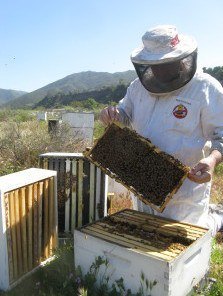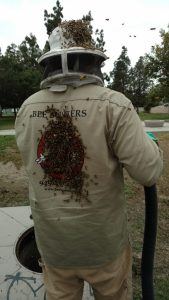The Threat of Asian Giant Hornets: What You Need to Know
Asian giant hornets, also known as murder hornets, have become a growing concern in Orange County, CA. These invasive pests pose a significant threat to honeybees and other pollinators, as well as to human health and safety. At Bee Busters, we are dedicated to protecting our communities from the dangers of Asian giant hornets through effective removal and rescue services.
Understanding Asian Giant Hornets
Asian giant hornets are the largest species of hornet in the world, measuring up to 2 inches in length. They have distinctive orange and black stripes, large mandibles, and a potent venom that can cause severe pain and even death in some cases. These hornets are native to parts of Asia but have recently been found in North America, raising concerns among beekeepers, farmers, and residents in Orange County, CA.
One of the most alarming aspects of Asian giant hornets is their ability to decimate honeybee colonies. A single hornet can kill up to 40 honeybees per minute, and a group of hornets can destroy an entire hive in a matter of hours. This poses a significant threat to the agriculture industry, as honeybees play a crucial role in pollinating crops.
Signs of an Asian Giant Hornet Infestation
Identifying the presence of Asian giant hornets is essential for effective removal and control. Some signs to look out for include:
- Large, orange and black hornets: Asian giant hornets are significantly larger than other hornet species and have distinct coloration.
- Damaged or destroyed honeybee hives: If you notice a sudden decline in honeybee activity or find dead bees near a hive, it could indicate an Asian giant hornet attack.
- Hornet nests: Asian giant hornets build large, papery nests, typically in underground cavities or hollow trees.
If you suspect the presence of Asian giant hornets on your property or in your community, it is crucial to contact a professional removal service like Bee Busters immediately.
Our Approach to Asian Giant Hornet Removal and Rescue
At Bee Busters, we understand the urgency and importance of addressing Asian giant hornet infestations. Our team of experienced professionals is equipped with the knowledge, tools, and techniques necessary to effectively remove and rescue these pests while minimizing harm to other beneficial insects.
When we receive a call about a potential Asian giant hornet sighting in Irvine, Laguna Beach, Laguna Hills, Lake Forest & Mission Viejo, CA, we respond promptly and assess the situation. Our primary goal is to locate and remove the hornet nest safely, ensuring that no further damage is done to honeybee colonies or other pollinators in the area.
We employ a range of strategies to remove Asian giant hornets, including:
- Trapping: We use specialized traps to capture and remove hornets from the affected area.
- Nest removal: Once we locate the hornet nest, we carefully extract it and dispose of it properly to prevent future infestations.
- Rescue and relocation: Whenever possible, we work to rescue and relocate any honeybees or other beneficial insects that may have been impacted by the hornet infestation.
At Bee Busters, we never fail to resolve an Asian giant hornet problem. We are always available to respond to calls and are proud to service a wide range of regions, including Orange County, CA. With our expertise and dedication, you can trust us to keep your property and community safe from these invasive pests.
Protecting Our Ecosystems and Communities
The presence of Asian giant hornets in Orange County, CA threatens not only honeybees and other pollinators but also the delicate balance of our ecosystems. By choosing Bee Busters for your Asian giant hornet removal needs, you are taking a proactive step in protecting our environment and ensuring the safety of our communities.
In addition to our removal and rescue services, we also offer educational resources to help raise awareness about the dangers of Asian giant hornets and how to prevent infestations. By working together, we can combat the spread of these invasive pests and preserve the health and vitality of our region’s ecosystems.
Don’t wait until it’s too late. If you suspect the presence of Asian giant hornets on your property or in your community, contact Bee Busters today. Our team is ready to assist you with prompt, professional, and eco-friendly solutions to keep you, your family, and our environment safe from the threat of these dangerous pests.







